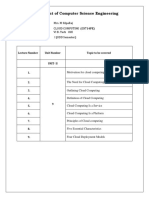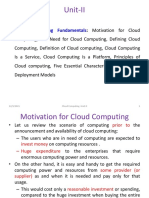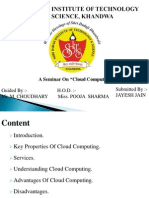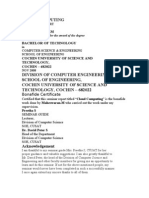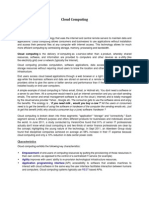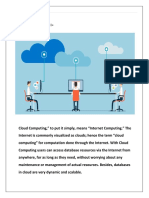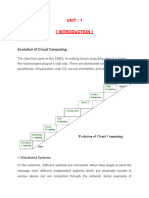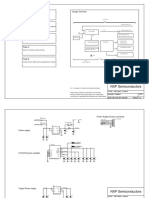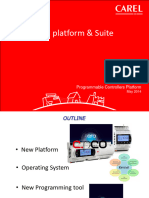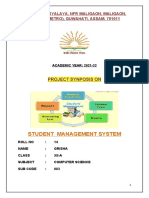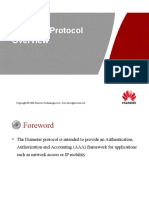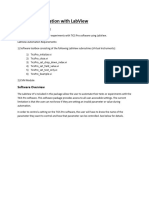0% found this document useful (0 votes)
13 views8 pagesCC Notes 2nd Unit
Cloud computing enables users to access computing resources over the Internet without the need for significant capital investment in hardware and software. It offers benefits such as cost reduction, data backup, reliability, and scalability, making it an attractive option for individuals and businesses. The National Institute of Standards and Technology (NIST) defines cloud computing as a model providing on-demand network access to a shared pool of configurable resources, characterized by essential features like on-demand self-service and rapid elasticity.
Uploaded by
sudha yaminiCopyright
© © All Rights Reserved
We take content rights seriously. If you suspect this is your content, claim it here.
Available Formats
Download as PDF, TXT or read online on Scribd
0% found this document useful (0 votes)
13 views8 pagesCC Notes 2nd Unit
Cloud computing enables users to access computing resources over the Internet without the need for significant capital investment in hardware and software. It offers benefits such as cost reduction, data backup, reliability, and scalability, making it an attractive option for individuals and businesses. The National Institute of Standards and Technology (NIST) defines cloud computing as a model providing on-demand network access to a shared pool of configurable resources, characterized by essential features like on-demand self-service and rapid elasticity.
Uploaded by
sudha yaminiCopyright
© © All Rights Reserved
We take content rights seriously. If you suspect this is your content, claim it here.
Available Formats
Download as PDF, TXT or read online on Scribd
/ 8









